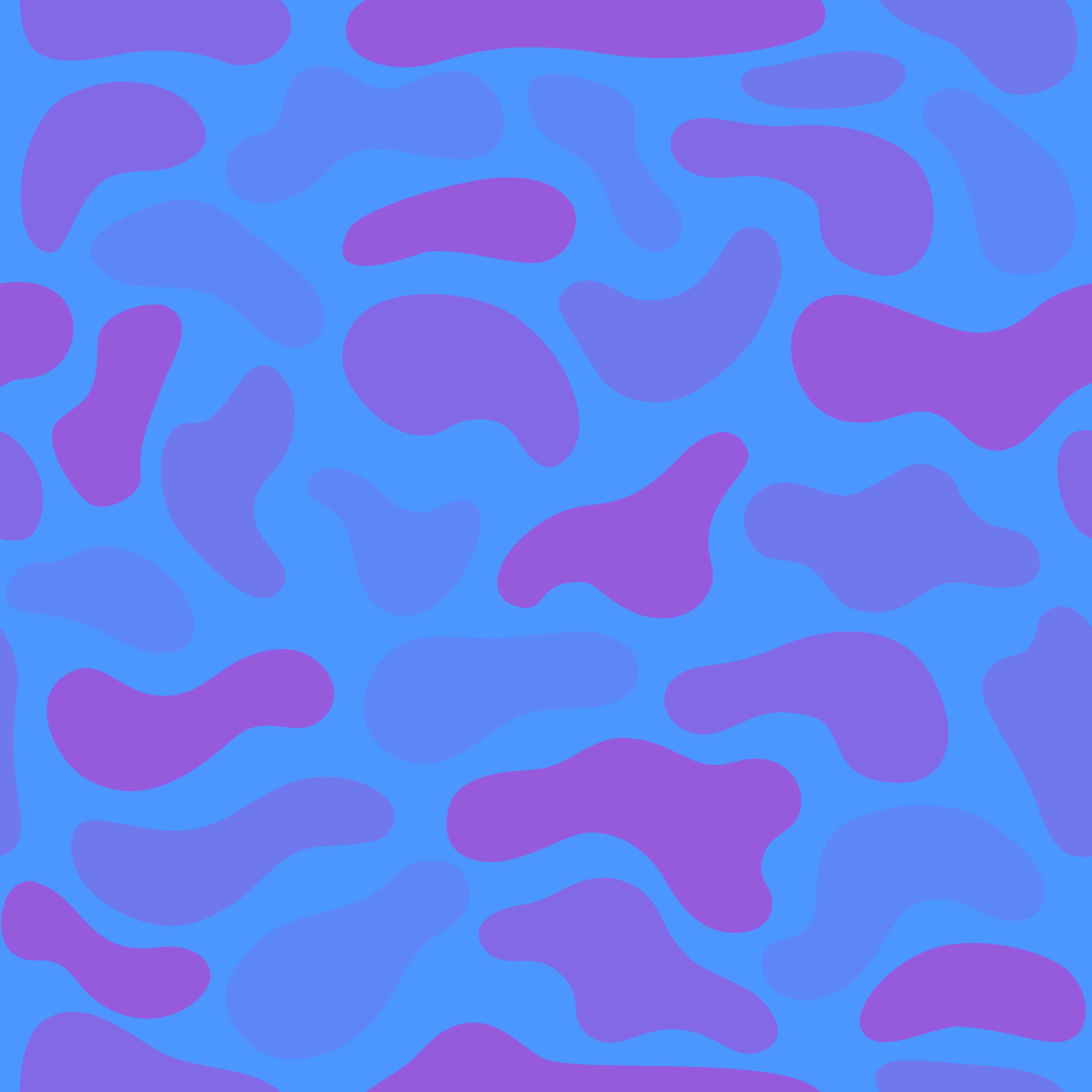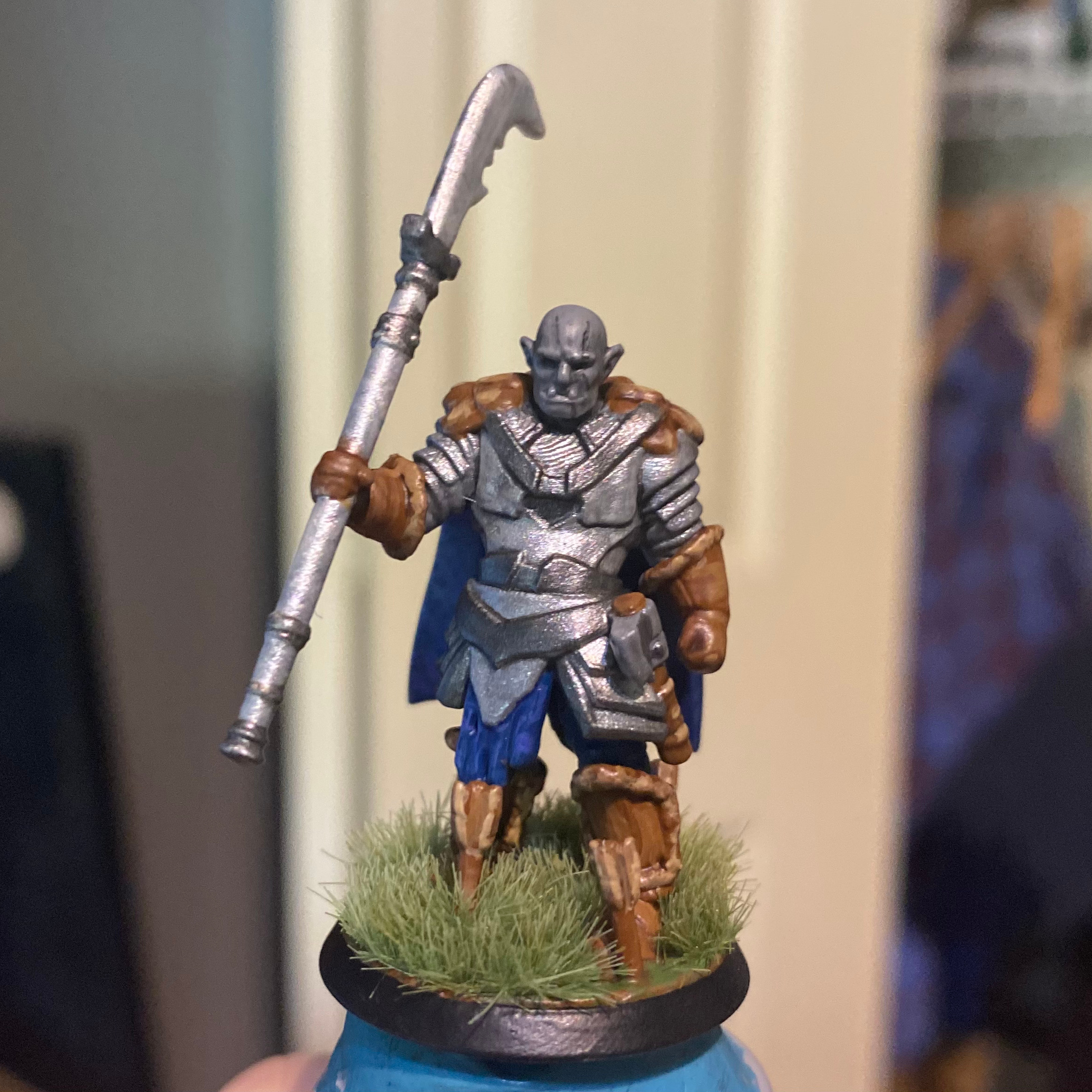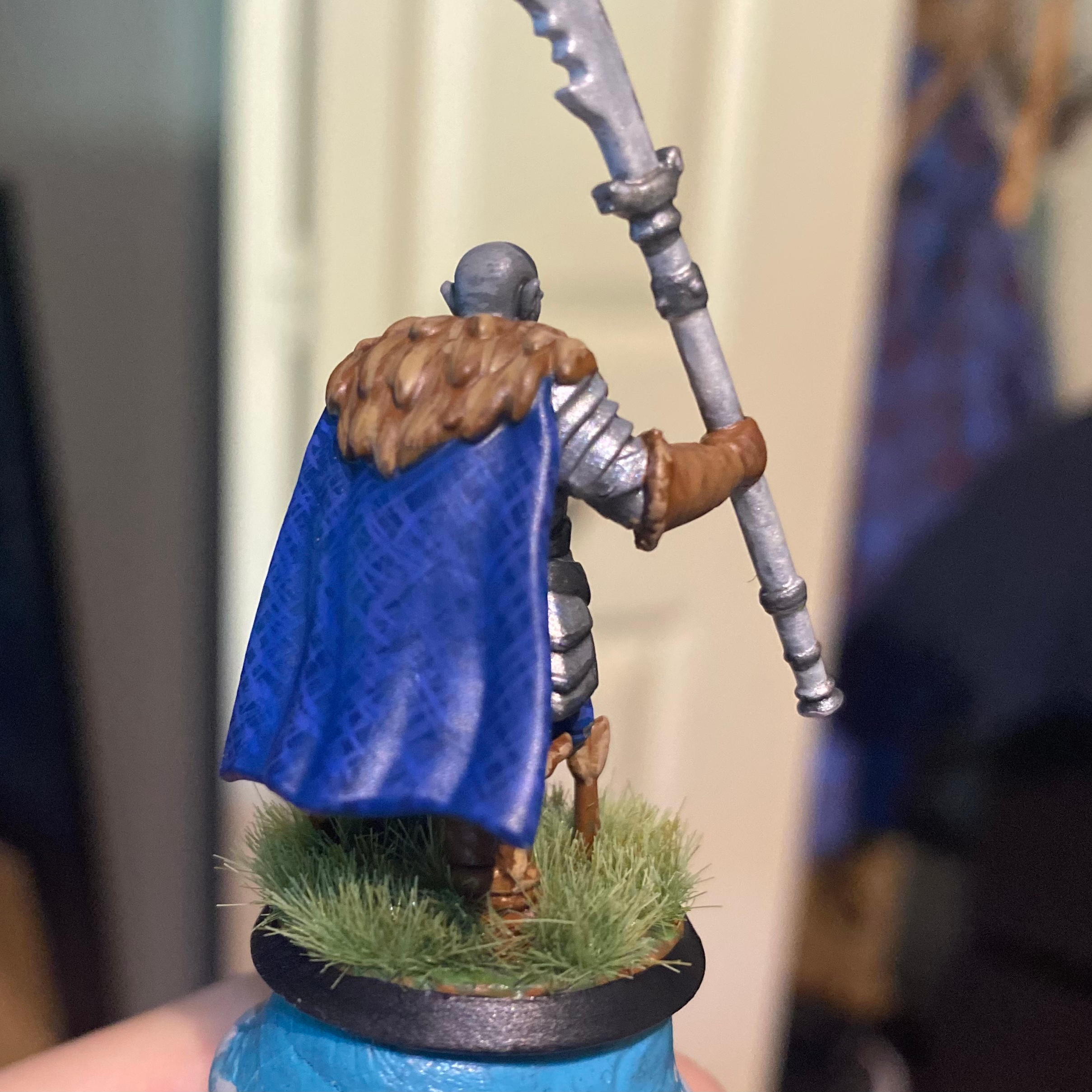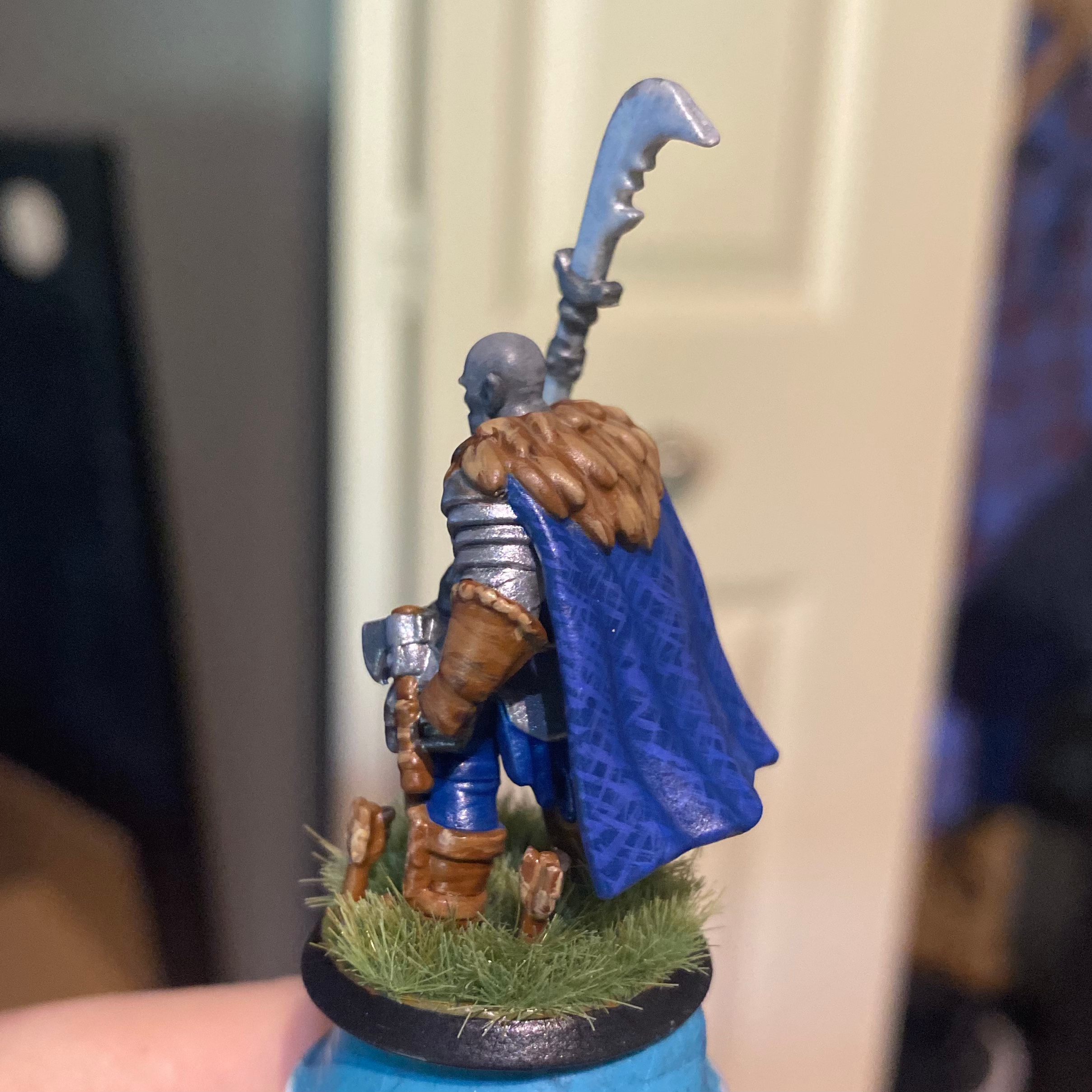
Half-Orc Soldier
Details
| Half-Orc Soldier (designed myself) |
Paints Used
Vallejo — Model Color — Medium Sea Grey
Vallejo — Game Color — Beasty Brown
Citadel — Layer — Ushabti Bone
Vallejo — Model Color — Lime Green
Vallejo — Model Color — Refractive Green
Vallejo — Model Color — Flat Green
Vallejo — Game Color — Imperial Blue
Vallejo — Game Color — Ultramarine Blue
Vallejo — Model Color — Silver
Vallejo — Game Color — Gunmetal
Citadel — Shade — Reikland Fleshshade
Citadel — Shade — Agrax Earthshade
Citadel — Contrast — Guilliman Flesh
Citadel — Contrast — Ultramarines Blue
Krylon — Clear Coatings — Matte Finish
Krylon — Color Maxx — Satin Crystal Clear
A Half-Orc Soldier, designed myself and purchased through Hero Forge.
This is my character for a Dungeons & Dragons campaign I used to play in. His name is Urag Gro-Shub (a name stolen from the orc librarian character in Skyrim). My character was a half-orc fighter who was in the military. He hates magic, thinking it ruins the sanctity of battle and honor, which also brought on the quote by me, "why would they change combat? Combat is combat!"
Anyway, this mini was very hard to paint because the cape and the arrows sticking out of the ground were blocking my brush from reaching a lot of spots on his back and feet. I had to just accept that his back will not be very detailed (or even fully painted).
I tried a technique I found where you use a sort of cross-hatching method to make fabric look stitched. I tried it out on the blue cape, but the paint was drying too fast on my brush so the lines were kind of spotty and often too thick. It didn’t turn out terrible, but didn’t quite get the effect I was going for.
I used a few random stipplingStippling is a painting technique where you gently jab with the tip of your paint brush to create spotty splotches of color. It’s usually used for texturing rough-looking surfaces, or combined with glazing to create smooth blends. and messy layeringLayering is the technique of creating a smooth blend between colors by using multiple layers slightly thinned paint and shrinking each layer to create a smooth transition between colors. methods for the fur. Not the most detailed technique, but it worked for a tabletop-readyTable-ready is a term to describe a miniature that may not look as good as the painter would like, but looks good enough that it’s ready to be played with on in tabletop games. mini such as this.
I also used a lot of Vallejo grass tufts on the base, making him look like he’s walking through a grassy battlefield.
Overall, I really like how this mini turned out. The face is simple but effective, and the fur and cloak texture looks pretty good for my current skill level.



